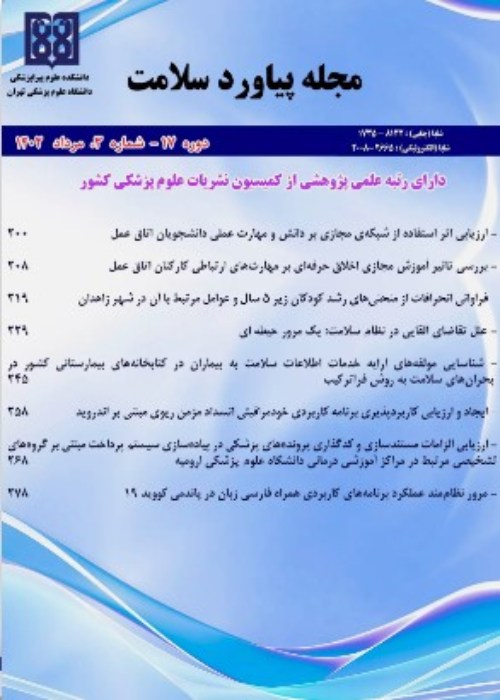Risk Assessment of the Operating Room Processes Using the Failure Mode, Effects, and Criticality Analysis (FMECA) Method: A Case Study
Operation rooms have several specialty processes, a higher level of technology, complicated treatment protocols, and the need for skillful human recourses, which is one of the highest risk wards in the hospital. Therefore, this study was initiated to identify and evaluate potential errors by using the Failure Mode, Effects, and Criticality Analysis (FMECA) approach to recognize the potential errors in operation rooms of Golestan hospital of Ahvaz.
This research was done with a qualitative approach in seven stages and it was based on the FMECA protocol. Data were obtained through direct observation, assessment of documents and interviews with the related staff. In this regard, surgical processes were extracted from the beginig of the surgical planning to discharge patient from the post-anesthesia care unit, after that the potential errors associated with each process were identified. Finally, the risk priority number of each of them was calculated according to the indicators of Occurrence (O), Severity (S), and Detectability (D). Score analysis was performed using descriptive statistics and SPSS software.
In the present study, during the analysis of processes related to surgical care, 17 primary surgery processes and 75 sub processes (from surgical planning to discharg from the post-anesthesia care unit) were identified. Seventy failure modes were identified. Ultimately, after analyzing the failure modes in the risk matrix, among the 70 identified failure modes, two failure modes had unacceptable risk, including no proper cleaning of the operation theatre and marking the surgical site, and there was Seven other failure modes with moderate risk, including unappropraite hand hygiene and environmental and operating room fixed equipment disinfection, central oxygen disconnection, lack of equipments in night shift, delay in delivery of prostheses to the surgical site, transfer of patient who requires intensive care to the ward, were identified. Human and organizational causes contributed the most to the occurrence of potential errors.
Analysis of failure modes showed that the highest probability of error occurs in the processes during surgery and due to human and organizational factors. Identification of 70 potential errors in 17 processes of the Operating Room indicates the integrity of FMECA’s preventive approach in identifying and prioritizing the high-risk areas of the processes, insensitive parts such as the operating room.
- حق عضویت دریافتی صرف حمایت از نشریات عضو و نگهداری، تکمیل و توسعه مگیران میشود.
- پرداخت حق اشتراک و دانلود مقالات اجازه بازنشر آن در سایر رسانههای چاپی و دیجیتال را به کاربر نمیدهد.


